Entrez 6198 | Ensembl ENSG00000108443 | |
Aliases RPS6KB1, PS6K, S6K, S6K-beta-1, S6K1, STK14A, p70 S6KA, p70(S6K)-alpha, p70-S6K, p70-alpha, P70-S6 Kinase 1, ribosomal protein S6 kinase B1, p70S6K, p70S6 kinase External IDs MGI: 1270849 HomoloGene: 81703 GeneCards: RPS6KB1 | ||
Ribosomal protein S6 kinase beta-1 (S6K1), also known as p70S6 kinase (p70S6K, p70-S6K), is an enzyme (specifically, a protein kinase) that in humans is encoded by the RPS6KB1 gene. It is a serine/threonine kinase that acts downstream of PIP3 and phosphoinositide-dependent kinase-1 in the PI3 kinase pathway. As the name suggests, its target substrate is the S6 ribosomal protein. Phosphorylation of S6 induces protein synthesis at the ribosome.
Contents
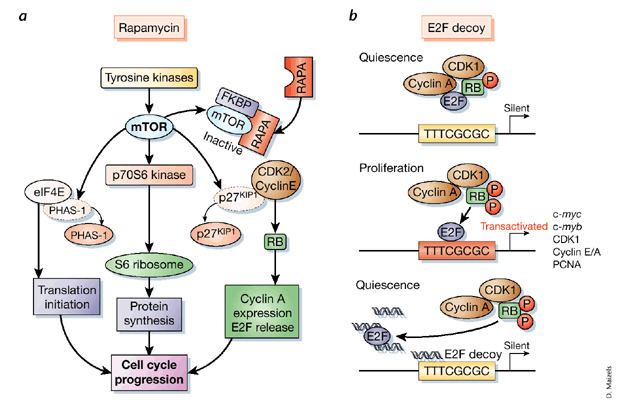
The phosphorylation of p70S6K at threonine 389 has been used as a hallmark of activation by mTOR and correlated with autophagy inhibition in various situations. However, several recent studies suggest that the activity of p70S6K plays a more positive role in the increase of autophagy.
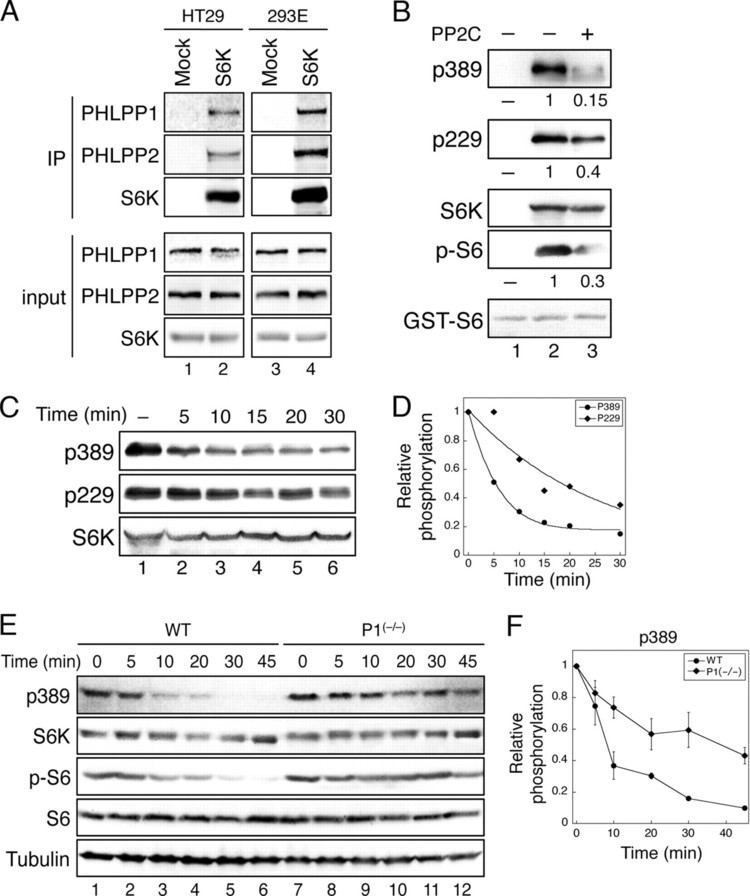
Function
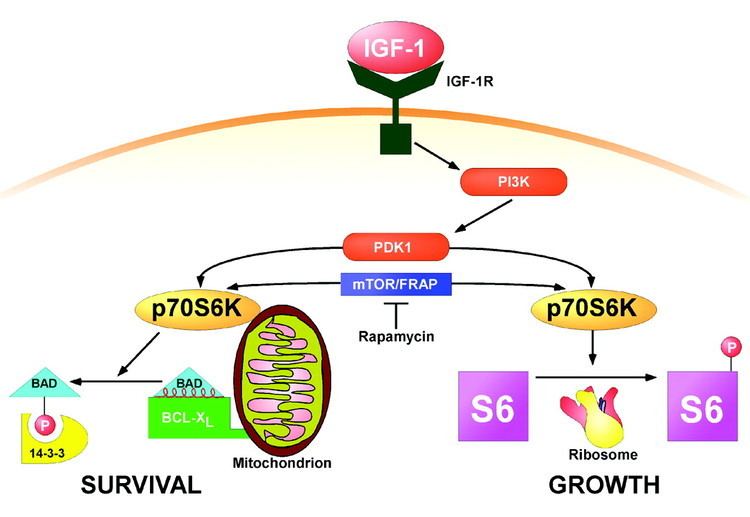
This gene encodes a member of the RSK family of serine/threonine kinases. This kinase contains 2 non-identical kinase catalytic domains and phosphorylates several residues of the S6 ribosomal protein. The kinase activity of this protein leads to an increase in protein synthesis and cell proliferation. Amplification of the region of DNA encoding this gene and overexpression of this kinase are seen in some breast cancer cell lines. Alternate translational start sites have been described and alternate transcriptional splice variants have been observed but have not been thoroughly characterized.
mTOR

The p70S6 kinase functions as part of a signaling pathway that includes mTOR (the mechanistic target of rapamycin). mTOR can be activated in distinct ways, thereby activating p70S6K. For example, branched chain amino acids such as leucine are sufficient to activate mTOR, resulting in an increase in p70S6K phosphorylation (and thereby activating it). mTOR is also in a pathway downstream of the kinase Akt. Akt is typically activated upon stimulation of a cell with a growth factor (such as IGF-1). Akt then activates mTOR (by inhibiting the Tsc complex), leading to p70S6K activation.
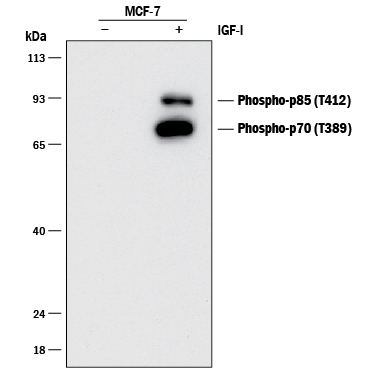
Physical exercise activates protein synthesis via phosphorylation (activation) of p70S6K in a pathway that is dependent on mTOR, specifically mTORC1. This has been demonstrated by using an inhibitor of mTOR, rapamycin, to block an increase in muscle mass, despite increases in load (e.g., exercise). Exercise has been shown to increase levels of IGF-1 in muscle, thus inducing the IGF-1/PI3K/Akt/p70S6K signaling pathway, and thereby increasing the protein synthesis required to build muscle.
Clinical significance
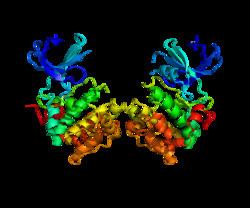
Inhibition of the S6K1 protein, or a lack of it, slows the production of adipose (fat) cells by disrupting and retarding the initial "commitment stage" of their formation. The study could have implications for the treatment of obesity.
Amplification of the region of DNA encoding this gene and overexpression of this kinase are seen in some breast cancer cell lines.
Another pathway for which P70 has proposed involvement is in muscle lengthening and growing. P70 is phosphorylated by passive stretch in the soleus muscle. This may be one of many protein kinases involved in muscle building.
In its inactive state, S6K1 is bound to eIF3 and detaches following phosphorylation by mTOR/Raptor. Free S6K1 is then able to phosphorylate a number of its targets, including eIF4B.
Interactions
P70-S6 Kinase 1 has been shown to interact with:
